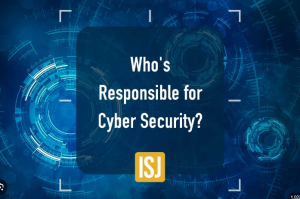
Computer security, often called cybersecurity, is the practice of defending computer systems, networks, and data from unauthorized access, theft, and damage. As the world becomes increasingly digital, the importance of computer security has grown exponentially. But have you ever wondered who is responsible for computer security? Who laid the foundation of this critical discipline, and who ensures that systems remain protected today?
In this comprehensive article, we’ll explore the origins of computer security, the pioneers who shaped it, and the stakeholders responsible for maintaining digital security in the modern era.
The Origins of Computer Security
The concept of computer security began to take shape in the 1960s. One of the earliest concerns about computer system security arose at the Massachusetts Institute of Technology (MIT), where researchers began exploring the idea of time-sharing systems. With multiple users accessing a central computer, the need to protect data from unauthorized users became evident.
The first major study on computer security was conducted by the RAND Corporation in 1970, commissioned by the United States Department of Defense. This research laid the groundwork for understanding threats, vulnerabilities, and the importance of protecting computer systems.
Willis Ware – The Father of Computer Security
When discussing the origins of computer security, one name stands out: Willis H. Ware. Often considered the “father of computer security,” Ware chaired the Department of Defense task force that produced the Ware Report in 1970. This report emphasized the need for security controls and led to the development of the Trusted Computer System Evaluation Criteria (TCSEC), also known as the Orange Book.
Ware’s contributions highlighted that computer systems needed formal policies and technical mechanisms to enforce security. His work fundamentally shaped how organizations, especially governments, approached information security in the digital age.
The Evolution of Cybersecurity
After the Ware Report, the computer security field expanded rapidly. The rise of personal computers, the internet, and mobile devices brought new threats and challenges. In the 1980s and 1990s, viruses like the Morris Worm exposed vulnerabilities in networked systems, prompting the need for antivirus software and firewalls.
As technology evolved, so did security strategies. Intrusion detection systems, encryption protocols, and multi-factor authentication became standard tools in the cybersecurity toolbox.
Who Is Responsible for Computer Security Today?
In today’s interconnected world, responsibility for computer security is shared across various stakeholders. Let’s look at each group and their roles.
1. Governments and Regulatory Bodies
Governments play a critical role in establishing cybersecurity standards and laws. Agencies like the National Institute of Standards and Technology (NIST) in the U.S., European Union Agency for Cybersecurity (ENISA), and other national cybersecurity centers create guidelines to ensure organizations implement secure systems.
Regulatory frameworks such as GDPR, HIPAA, and PCI-DSS enforce data protection measures and ensure companies are held accountable for breaches.
2. Organizations and Enterprises
Every company that operates online has a duty to secure its infrastructure and data. Businesses must implement firewalls, antivirus programs, endpoint protection, secure access controls, and encryption. Moreover, companies are responsible for training employees on cybersecurity best practices.
Chief Information Security Officers (CISOs) and IT departments lead these efforts, ensuring that security policies are applied across the organization.
3. Cybersecurity Professionals
A growing army of professionals ensures our digital spaces are safe. Cybersecurity analysts, penetration testers, ethical hackers, and incident response teams detect, prevent, and respond to cyber threats. Their expertise helps identify vulnerabilities before malicious hackers can exploit them.
Certifications like CISSP, CEH, and CompTIA Security+ help validate the skills of these professionals.
4. Software Developers
Secure coding practices begin with the people who write software. Developers must ensure their code is free from common vulnerabilities like SQL injection, buffer overflows, and cross-site scripting (XSS). Following Secure Development Lifecycle (SDL) methodologies helps integrate security into every phase of software creation.
5. End Users (You and Me)
Perhaps surprisingly, every user of technology shares responsibility for computer security. Weak passwords, clicking suspicious links, or ignoring software updates can compromise even the most secure systems. Users must be aware of phishing scams, ransomware, and social engineering tactics.
Using strong, unique passwords, enabling two-factor authentication, and staying informed are essential steps everyone should take.
Modern Challenges in Computer Security
Despite advancements in cybersecurity technologies, new threats continue to emerge. Some of the biggest modern challenges include:
- Ransomware Attacks: These malicious programs encrypt user data and demand a ransom for its release.
- Zero-Day Exploits: These are vulnerabilities unknown to software vendors and are exploited before a fix can be issued.
- Phishing: Deceptive emails and websites trick users into revealing sensitive information.
- IoT Vulnerabilities: Internet of Things (IoT) devices often lack adequate security, making them easy targets.
- AI-Driven Attacks: Cybercriminals now use artificial intelligence to create sophisticated and hard-to-detect attacks.
The Future of Computer Security
The future of computer security lies in proactive defense, automation, and artificial intelligence. Machine learning algorithms are being developed to detect threats in real-time, predict attacks, and automate responses.
Moreover, quantum computing poses both a threat and an opportunity. While it could break current encryption methods, it also opens the door to quantum cryptography, a new frontier in secure communication.
Conclusion
So, who is responsible for computer security? The answer is everyone—from visionaries like Willis Ware who laid the foundation, to governments, corporations, cybersecurity professionals, developers, and everyday users.
Computer security is not a one-time task but a continuous process. As technology evolves, so do threats. Therefore, it is essential to stay vigilant, informed, and proactive. Whether you’re managing a multinational corporation or browsing social media at home, you play a part in safeguarding the digital world.